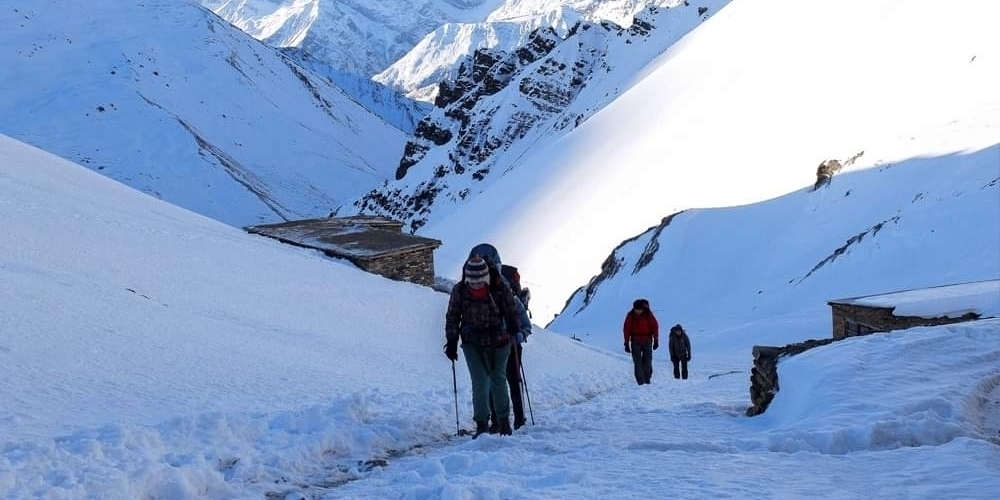A Step-by-Step Guide to Island Peak Climbing
Island Peak Climb with EBC Trek Amid the towering peaks of the Himalayas in Nepal. Island Peak, also known as Imja Tse, is an enticing challenge. This wonderful peak, with an elevation of 6,189 meters/20,305 feet, offers a taste for high-altitude climbing without requiring extensive technical skills. Over the years, there has been an increase in the popularity of Island Peak attracting both inexperienced climbers eager to venture into the Himalayas for the first time and accomplished mountaineers who are looking forward to making another conquest. We'll be taking you through the step-by-step route to climbing Island Peak in this comprehensive guide, providing a look at preparations, training, trail details, equipment, and more.
For the successful ascent of the island peak, it is necessary to be fully prepared both physically and mentally. So here are some of the things to be prepared for:
Physical conditioning: due to the altitudes and difficult terrain, Island Peak requires a high level of fitness. To strengthen your endurance, take part in cardiovascular exercise, strength training, and endurance activities.
Altitude adjustment:
The necessary acclimatization shall be ensured to avoid altitude sickness. To allow your body to adapt, plan your route with gradual ascents and spend extra days at higher altitudes.
Mental Preparation:
There's a mental strain from climbing to higher altitudes. To be able to cope with the uncertainties and difficulties that may occur on an expedition, you are going to have to become mentally resilient and optimistic.
Along with the thorough preparation, getting permits for mountaineering is essential. Some of the mountaineering essentials are as follows:
Getting a permit:
A climbing permit from the Nepal Mountaineering Association is required if you want to climb Island Peak. It is also necessary to obtain a permit for entry into Sagarmatha National Park.
Local guides and porters:
There is a very strong recommendation for the hire of a guide or porters. Expert guides offer valuable information on the route, management of logistics, and ensuring your safety.
After making sure that you have gotten all the permits that you require, you are good to move ahead in this magnificent journey to explore the mountain world of Island Peak. The itinerary for this journey is as follows:
Kathmandu to Lukla: The journey began with a charming flight from Nepal's capital city, into the small airstrip in the Himalayas. It is an adventure to fly alone, offering spectacular views of the landscape.
Trek to base camp: Prepare for the traditional Everest base camp trek and enjoy the breathtaking views of the Khumbu region as you hike to base camp. Suspension bridges, rhododendron forests, and lovely Sherpa settlements are all along the path.
Arrival at Island Peak Base Peak: Continue to Island Peak Base Camp after arriving at Everest Base Camp. Climbers typically spend a day training and acclimatizing here, honing crucial climbing techniques with their guides.
High camp: Ascend to High Camp, which is located in a rocky area above Base Camp. This is the starting point of more difficult terrain and where the summit push begins.
Summit day: Usually, the summit day begins quite early in the morning. The path entails climbing a steep snow and ice wall while navigating crevasses and using ropes. Climbers are rewarded with an amazing panoramic vista at the peak after their final push.
Ensuring that you have all the necessary gear is also equally important. Mountaineering boots, crampons, an ice axe, a harness, a helmet, and gloves are all necessary climbing accessories. Ask your guide for details on each piece of equipment. You also need to be familiar with the basic mountaineering techniques such as using crampons, ice axe arrest, and rope management which will be informed and taught by your guide. Proper knowledge regarding these things is vital to ensure the climber's safety during the ascent.
Since mountain climbing is not a piece of cake for everybody, it comes with its rewards and challenges. Changes in weather conditions, altitude-related problems, and technically complex terrain are common challenges encountered during the ascent of the island peak. These difficulties are alleviated by adequate training and acclimatization. But keeping these things aside, it is a deeply satisfying experience to stand on the top of Island Peak. The Himalayas are covered in this view, including legendary peaks such as Everest, Lhotse, and Nuptse. It's a feeling of accomplishment that might get you overwhelmed.
The climb to the summit of Mount Island requires diligence, preparation, and strong will. The experience is unprecedented from the first day of physical training, up to the triumphant moment at the summit. The climb, moreover, is an opportunity for adventurers to discover the Sherpa people's fascinating culture and indescribable beauty of the Himalayan landscape as well as giving them a taste of highly adventurous adventure.





